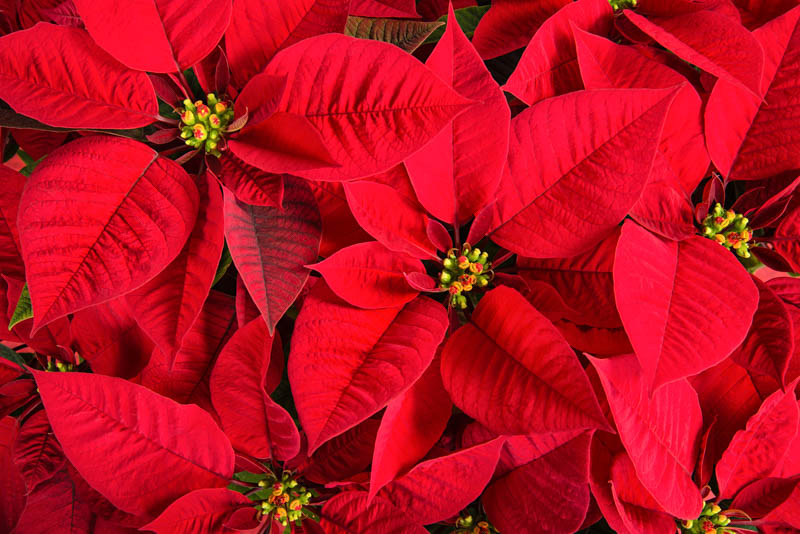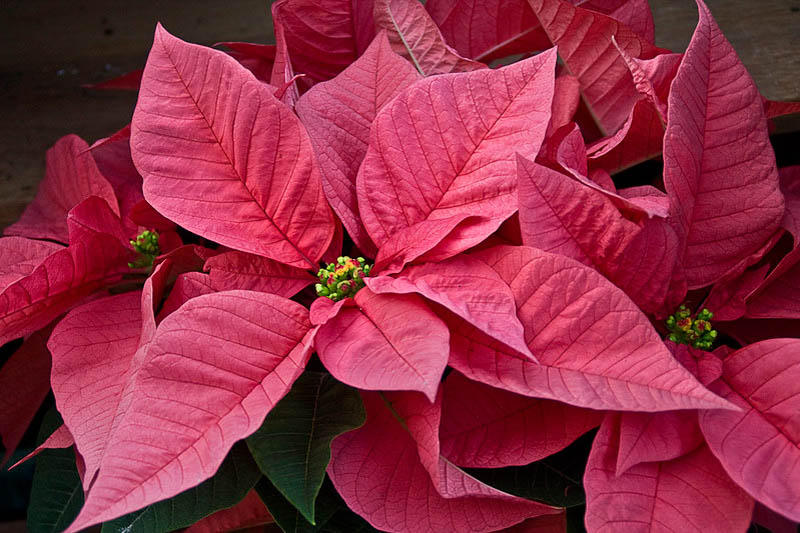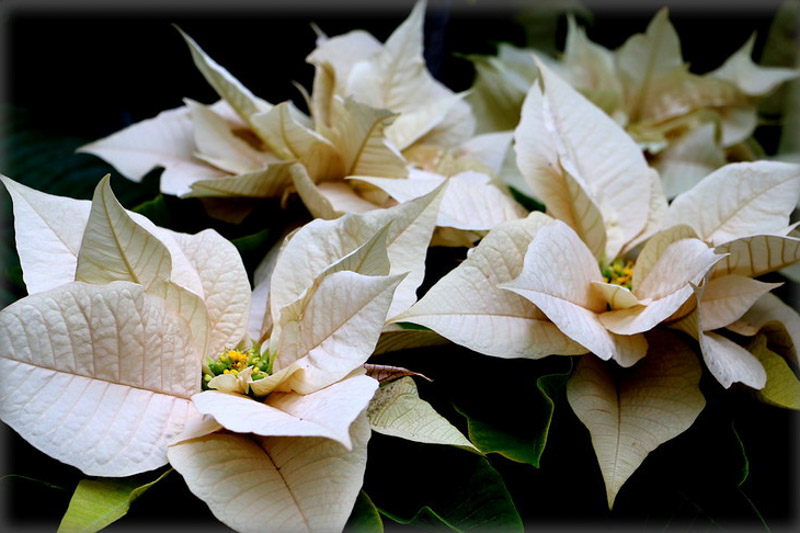Poinsettia, Bird-of-Paradise Flower, Christmas Flower, Christmas Star, Fire on the Mountain, Fire Plant, Lobster Flower, Mexican Easter Flower, Mexican Flameleaf, Painted Leaf, Pride of Barbados
The Poinsettia encapsulates the holiday spirit for many people, brightening homes and public spaces with its vibrant, festive colors. Its adaptability to life indoors has made it a staple of the holiday season far beyond its tropical origins, and its striking appearance guarantees its continuing popularity. Poinsettia ranks as a top choice among tropical flowers for enthusiasts and gardeners.
Euphorbia pulcherrima, commonly known as Poinsettia, is a plant species from the diverse spurge family (Euphorbiaceae). Prized for its striking red and green foliage, it is the most popular Christmas plant and best-selling potted plant in the United States and Canada.
Native:
The Poinsettia is native to Mexico and Central America, where it is known as “Flor de Nochebuena” or Christmas Eve Flower.
Plant Type and Habit:
It’s a perennial shrub in its native habitat but is often grown as an annual or houseplant in temperate climates. The plant has an upright, branching habit.
Size:
Poinsettia can grow up to 3-10 feet tall (90-300 cm) and 3-7 feet. wide (90-210 cm). As a potted houseplant, it rarely exceeds 2-3 ft. (60-90 cm). There are over 100 varieties of Poinsettias available.
Flowers:
Contrary to popular belief, the colorful parts of Poinsettias are not flowers but bracts (modified leaves). The actual flowers are small and yellow, situated in the center of the leafy red bracts. Poinsettias typically bloom in the short-day conditions of winter, specifically around Christmas time.
Foliage:
The plant has large, green, bluntly toothed, and ovate leaves. The upper leaves, called bracts, change color from green to red (or sometimes white, pink, or marbled) during the blooming period. The colorful bracts will drop after pollination. For the longest-lasting Poinsettias, choose plants with little or no yellow pollen showing.
Hardiness:
Poinsettias are sensitive to cold and are hardy only in USDA zones 9-11. They are not frost-tolerant and need a constant temperature of around 55º (18ºC) to color up nicely. In colder climates, they are usually grown indoors
Uses:
The Poinsettia is most widely used as a decorative plant during the Christmas season, both in homes and public spaces. Its striking red and green foliage make it a popular choice for holiday floral displays. It is perfect for patio containers or as an informal hedge in frost-free areas.
Wildlife:
The plant is not known for attracting significant wildlife, though in its native regions, it may attract certain pollinators.
Deer and Rabbits:
The plant is generally not favored by deer or rabbits, likely due to its somewhat toxic sap.
Toxicity: While not as toxic as once believed, the milky sap can irritate the skin and stomach if ingested, so keep the plant away from pets and children.
Drought:
Poinsettias are relatively drought-tolerant once established, although they prefer a more humid environment for optimal growth.
Invasiveness:
The plant is usually not considered invasive, particularly since it is sensitive to frost and can’t easily establish itself in non-tropical climates. It is reported to be invasive in Hawaii.
Benefits:
Besides its aesthetic value, the plant has cultural and economic importance, especially in the U.S., where it has become synonymous with holiday celebrations. It also has some traditional medicinal uses in its native regions, although these are not scientifically substantiated.
While Poinsettias are celebrated for their festive, colorful bracts, they modestly contribute to air purification, subtly removing indoor air pollutants and improving overall air quality during the holiday season.
Fun Fact: It was named after Joel Roberts Poinsett, the first United States Minister to Mexico, who introduced the plant to the U.S. in the 1820s.

Growing and caring for Poinsettias doesn’t have to be complicated. These festive plants are relatively easy to maintain with the right know-how. Here’s your comprehensive guide to ensuring your Poinsettias stay vibrant and healthy all season.


Propagating poinsettias is usually done through stem cuttings. While the process is not as straightforward as propagating some other houseplants, it’s still possible for home gardeners to achieve good results.
By following these steps, you can successfully propagate poinsettia plants and enjoy these festive beauties for many holiday seasons to come!
| Hardiness |
9 - 11 |
|---|---|
| Heat Zones |
10 - 11 |
| Climate Zones | 13, 16, 17, 18, 19, 20, 21, 22, 23, 24, H1, H2 |
| Plant Type | Houseplants, Shrubs |
| Plant Family | Euphorbiaceae |
| Genus | Euphorbia |
| Common names | Pride of Barbados, Poinsettia, Fire Plant, Fire on the Mountain, Christmas Flower, Christmas Star |
| Exposure | Full Sun, Partial Sun |
| Season of Interest |
Spring (Early) Winter |
| Height |
3' - 10' (90cm - 3m) |
| Spread |
3' - 7' (90cm - 210cm) |
| Spacing | 36" (90cm) |
| Maintenance | High |
| Water Needs | Average |
| Soil Type | Loam |
| Soil pH | Alkaline, Neutral |
| Soil Drainage | Well-Drained |
| Characteristics | Showy, Semi-Evergreen |
| Tolerance | Drought, Deer, Rabbit |
| Garden Uses | Hedges And Screens, Patio And Containers |
| Hardiness |
9 - 11 |
|---|---|
| Heat Zones |
10 - 11 |
| Climate Zones | 13, 16, 17, 18, 19, 20, 21, 22, 23, 24, H1, H2 |
| Plant Type | Houseplants, Shrubs |
| Plant Family | Euphorbiaceae |
| Genus | Euphorbia |
| Common names | Pride of Barbados, Poinsettia, Fire Plant, Fire on the Mountain, Christmas Flower, Christmas Star |
| Exposure | Full Sun, Partial Sun |
| Season of Interest |
Spring (Early) Winter |
| Height |
3' - 10' (90cm - 3m) |
| Spread |
3' - 7' (90cm - 210cm) |
| Spacing | 36" (90cm) |
| Maintenance | High |
| Water Needs | Average |
| Soil Type | Loam |
| Soil pH | Alkaline, Neutral |
| Soil Drainage | Well-Drained |
| Characteristics | Showy, Semi-Evergreen |
| Tolerance | Drought, Deer, Rabbit |
| Garden Uses | Hedges And Screens, Patio And Containers |
How many Euphorbia pulcherrima (Poinsettia) do I need for my garden?
| Plant | Quantity | |
|---|---|---|
| Euphorbia pulcherrima (Poinsettia) | N/A | Buy Plants |
Create a membership account to save your garden designs and to view them on any device.
Becoming a contributing member of Gardenia is easy and can be done in just a few minutes. If you provide us with your name, email address and the payment of a modest $25 annual membership fee, you will become a full member, enabling you to design and save up to 25 of your garden design ideas.
Join now and start creating your dream garden!
Create a membership account to save your garden designs and to view them on any device.
Becoming a contributing member of Gardenia is easy and can be done in just a few minutes. If you provide us with your name, email address and the payment of a modest $25 annual membership fee, you will become a full member, enabling you to design and save up to 25 of your garden design ideas.
Join now and start creating your dream garden!